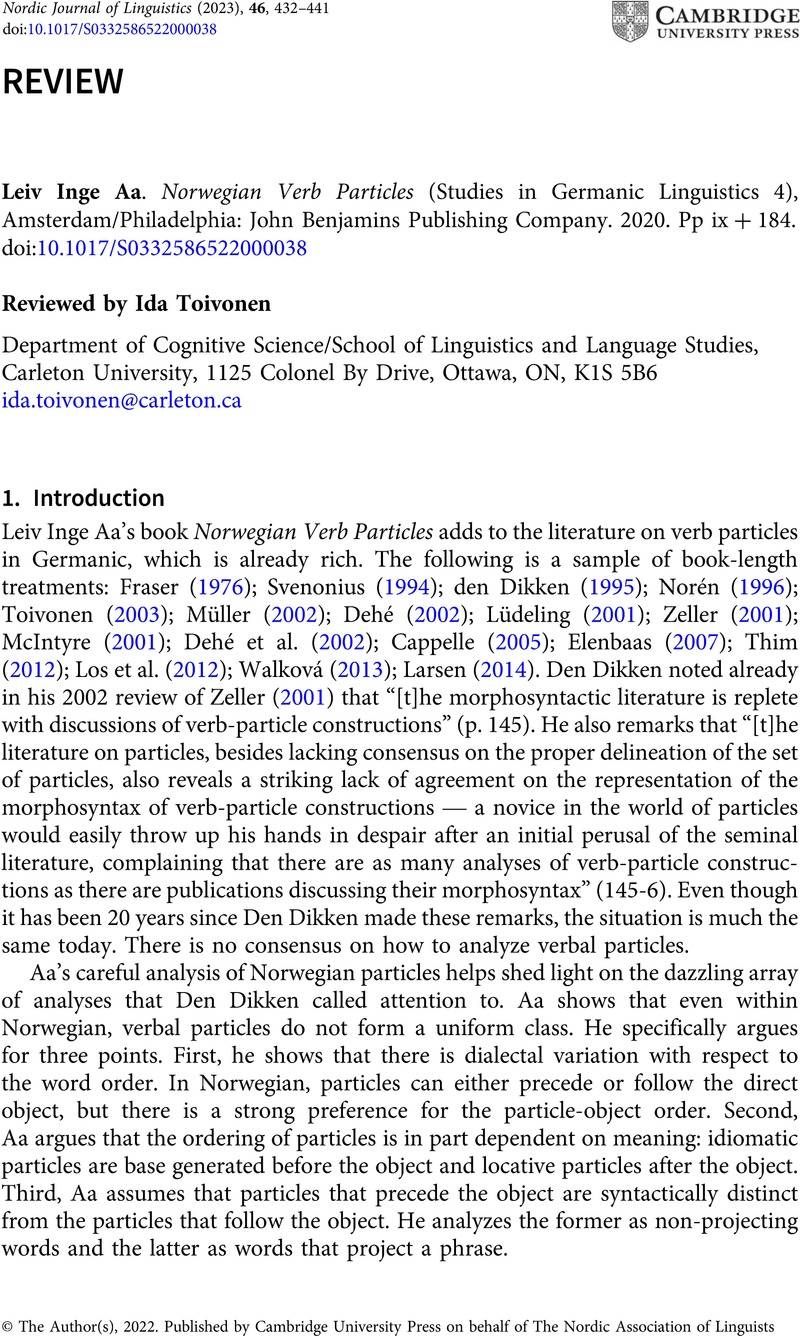No CrossRef data available.
Article contents
Leiv Inge Aa. Norwegian Verb Particles (Studies in Germanic Linguistics 4), Amsterdam/Philadelphia: John Benjamins Publishing Company. 2020. Pp ix + 184.
Review products
Published online by Cambridge University Press: 18 April 2022
Abstract

- Type
- Book Review
- Information
- Nordic Journal of Linguistics , Volume 46 , Special Issue 3: Call for Papers: NJL Special Issue , December 2023 , pp. 432 - 441
- Copyright
- © The Author(s), 2022. Published by Cambridge University Press on behalf of The Nordic Association of Linguists



